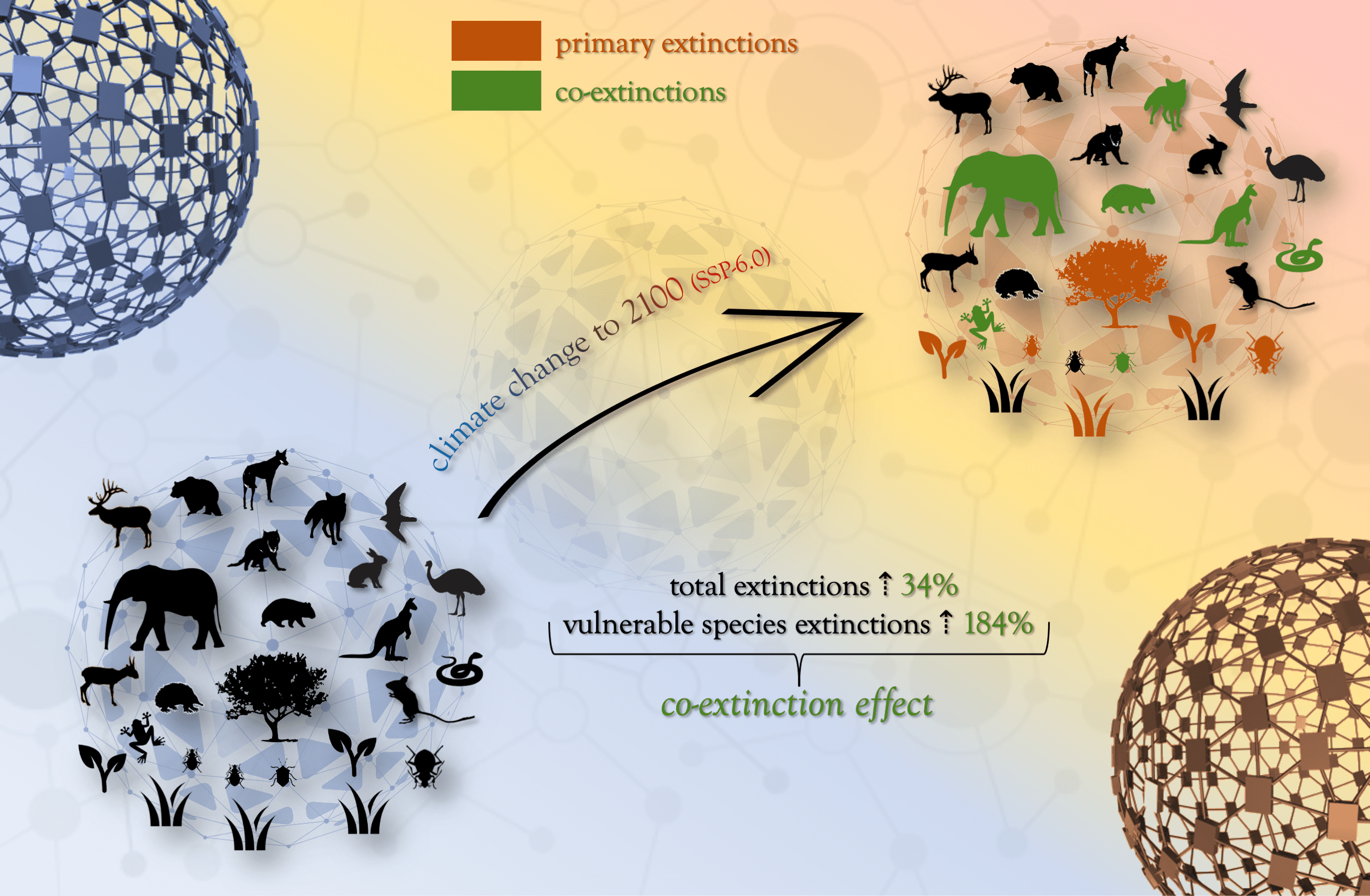A model of the Earth’s ecosystems indicates many species capable of surviving in a hotter world themselves are dependent on others that are more vulnerable. Consequently, we can expect a great many more “co-extinctions” than previous estimates have anticipated, although it’s still very much within humanity’s power to minimize the damage.
Endangered species lists indicate the plants and animals with little capacity to adapt to rapid temperature changes, but they struggle to take account of those put at risk by their relationships with species that may be directly affected.
Unfortunately, we don’t understand the webs of relationships within ecosystems as well as we would like, particularly those that exist far from the centers of scientific research. To get around this problem, Professor Corey Bradshaw of Flinders University and the University of Helsinki’s Dr Giovanni Strona took a new approach. They created a computer model of the Earth and filled it with virtual species, whose interrelationships were well known because they were generated by the computer system being used. In a new paper, the pair report how these species responded to the IPCC’s global heating scenarios out to 2100.
“Every species depends on others in some way,” Bradshaw noted in a statement. That’s obvious for predators that need their prey, but even those that get their energy directly from the Sun exist in a network, depending on those around them for nutrients.

Species such as elephants can surive hotter temperatures, but they depend on others that can’t, leading to indirect or “co-extinctions”. Image Credit: Flinders University
In total, the model predicts a reduction of 17.6 percent in vertebrate diversity, and that is only on the median emissions scenario. Naturally, higher emissions would make things worse.
“We show that there will be up to 34 percent more co-extinctions overall by 2100 than are predicted from direct effects alone,” Strona said. The figure rises to 184 percent among the species near the top of the food chain. Like us.
Not everyone may be convinced by a model of virtual species. However, Bradshaw told IFLScience the team verified the diversity their system produced per square kilometer against what is actually known, and also produced very similar predictions for primary extinctions to other researchers.
Children born today who live into their 70s can expect to witness the disappearance of literally thousands of plant and animal species, from the tiny orchids and the smallest insects, to iconic animals such as the elephant and the koala… all in one human lifetime.
“This study is unique, because it accounts also for the secondary effect on biodiversity, estimating the effect of species going extinct in local food webs beyond direct effects,” Bradshaw noted.
Disturbing as these results are, the pair didn’t consider some factors that could make things a great deal worse, primarily the effect of pollinator loss on plant diversity. “We can’t include them because don’t have the data to make a sensible network which would be defensible,” Bradshaw told IFLScience. However, given this potentially enormous extra cause of co-extinctions, he noted, “Our predictions are highly conservative.”
The model explored other threats to biodiversity, such as changes to land use and invasive species, but found climate change was the cause of the overwhelming majority of both primary and co-extinctions. This refutes the view that even if humanity can drastically slow the build-up of greenhouse gasses, other threats to biodiversity will denude the Earth anyway.
The work does not consider the capacity of seed banks and captive breeding programs to keep species alive outside their native habitats. Bradshaw expects these programs will only prove useful at the margins since out-of-context species cease to be functional. “If we can shift the balance 1-2 percent we should do that,” he told IFLScience. “But it will not solve the problem.”
For some, the year 2100 may seem comfortably distant, but Bradshaw noted “Children born today who live into their 70s can expect to witness the disappearance of literally thousands of plant and animal species, from the tiny orchids and the smallest insects, to iconic animals such as the elephant and the koala … all in one human lifetime.”
The paper is Open Access in Science Advances.
Source Link: “Co-Extinctions” Could Take Out One-Sixth Of Vertebrate Species This Century